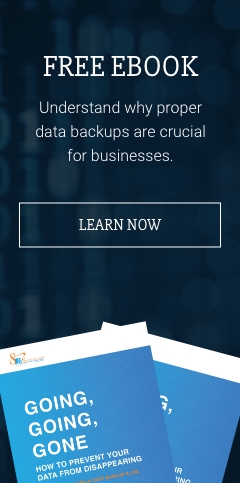If your business has been the victim of a cyberattack, you're likely eager to minimize your financial losses by filing a claim with your cyber insurance provider. In this blog post, we'll outline what insurers are looking for in claims applications so you can increase your chances of receiving a payout.
Strong physical security controls
When you’re filing a claim, you need to prove that you did everything you could to block or immediately stop the attack. This includes implementing security controls that prevent unauthorized physical access to the company’s information systems, equipment, and their respective operating environments. Examples of physical controls include:
- Keeping computers, devices, network equipment, and sensitive data in areas with closed windows and doors
- Locking the doors of private areas when there are no authorized individuals there
- Having security guards around your facility
- Installing surveillance cameras and motion or thermal alarm systems in the office
- Limiting the number of people who can make changes to your office’s security systems
- Requiring employees to present their company IDs and provide biometric identification (e.g., fingerprint, face, or iris scan) before they can enter the premises
- Using individually assigned keys and electronic locks that record who used them
- Requiring visitors to surrender their ID and use a sign-in and sign-out sheet
- Preventing remote employees from using personal — most likely unsecured — devices for sensitive business
Proper use of firewalls
Your insurance provider will look into your company’s firewall. A firewall monitors and controls the incoming and outgoing network traffic based on predetermined security rules. This protects your IT network from malware and unauthorized access attempts.
Your insurer will check if your firewall is properly configured and regularly updated. If it is not, they may deny your claim due to your failure to maintain your business’s cybersecurity systems.
Read also: Top cybersecurity protocols to implement in your business
Encrypted data
After a data breach, one of the first things your insurer will ask is whether the compromised data was encrypted. Encryption transforms readable data into an unreadable format so that only persons with the decryption key can decipher it. If the breached data was encrypted, cyber insurers will more likely cover the costs associated with the incident since the hackers won’t be able to make sense of the stolen information.
Effective user management
Your insurer will want to see that you have a proper user management system in place since it mitigates the risk of data breaches caused by malicious insiders or negligent employees. This system should include processes and tools for:
- Creating, changing, and deleting user accounts
- Assigning and revoking user privileges
- Authenticating user identities
- Monitoring user activities
What’s more, your insurance provider will investigate if you were able to immediately update user privileges whenever employees leave or responsibilities change. Finally, they will check if administrator privileges are limited to a few employees. Proof of unnecessary access may result in your claim getting denied.
Healthy password habits
Poor password hygiene is one of the top causes of cyberattacks and data breaches. This is why insurers will examine whether everyone in your company follows good password practices, such as:
- Using complex passwords or passphrases
- Not reusing passwords across different accounts
- Not storing passwords in unsecured areas (e.g., written on paper or shared Word documents)
- Enabling multifactor authentication
When you partner with Safebit , we’ll make sure that you have all the proper security measures in place, along with their documentation. This way, you are more likely to successfully get your payout should you ever file a cyber insurance claim. Learn the different must-have cybersecurity solutions in this FREE eBook.


